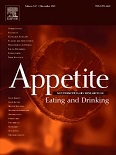Health gains through loss frames: testing the effectiveness of message framing on citizens’ use of nutritional warnings
Dublin Core
Título
Tema
Abstract
The aim of the present work was twofold: (i) to evaluate the effect of nutritional warnings and health-related packaging cues (nutrient claim and images of natural foods) on consumers’ food choices, and (ii) to evaluate the influence of two types of messages (gain-framed and loss-framed) aimed at encouraging the use of such warnings and packaging cues on food choices. A total of 510 participants were recruited using an advertisement on Facebook and Instagram targeted at Uruguayan adult users. Participants were randomly allocated to one of three experimental groups: control (n = 167), loss-framed messages (n = 177) and gain-framed messages (n = 166). Then, they completed a choice-conjoint task involving packages of crackers differing in three variables: nutritional warnings (present vs. absent), nutrient claim (present vs. absent) and images of seeds and wheat (present vs. absent). Warnings were the most relevant package element driving choices, even when participants were not exposed to any type of message. Exposure to loss-framed messages led to changes in the relative importance attached to the package characteristics, whereas gain-framed messages did not. Graphic pieces conveying messages encouraging the use of nutritional warnings by stressing the negative consequences of excessive consumption of sugar, fat, and sodium increased the relative importance attached to nutritional warnings and decreased the relative importance attached to health-related cues (nutrient claims and images of seeds and wheat). These results suggest that public awareness campaigns aimed at encouraging citizens to use nutritional warnings should emphasize the negative health consequences of excessive intake of sugar, fat, and
sodium.
Fuente
Editor
Fecha
Derechos
Información sobre Derechos de Autor (Por favor lea este aviso antes de abrir los documentos u objetos)
La legislación uruguaya protege el derecho de autor sobre toda creación literaria, científica o artística, tanto en lo que tiene que ver con sus derechos morales, como en lo referente a los derechos patrimoniales con sujeción a lo establecido por el derecho común y las siguientes leyes (LEY 9.739 DE 17 DE DICIEMBRE DE 1937 SOBRE PROPIEDAD LITERARIA Y ARTISTICA CON LAS MODIFICACIONES INTRODUCIDAS POR LA LEY DE DERECHO DE AUTOR Y DERECHOS CONEXOS No. 17.616 DE 10 DE ENERO DE 2003, LEY 17.805 DE 26 DE AGOSTO DE 2004, LEY 18.046 DE 24 DE OCTUBRE DE 2006 LEY 18.046 DE 24 DE OCTUBRE DE 2006)
ADVERTENCIA - La consulta de este documento queda condicionada a la aceptación de las siguientes condiciones de uso: Este documento es únicamente para usos privados enmarcados en actividades de investigación y docencia. No se autoriza su reproducción con fines de lucro. Esta reserva de derechos afecta tanto los datos del documento como a sus contenidos. En la utilización o cita de partes debe indicarse el nombre de la persona autora.
Formato
Idioma
Tipo
Identificador
Document Item Type Metadata
Original Format
- Fecha de agregación
- October 7, 2021
- Colección
- Bibliografía Nacional Química
- Tipo de Elemento
- Document
- Etiquetas
- Comunicación de salud, Etiquetado de Alimentos, Política alimentaria
- Citación
- Eguren, Jimena, “Health gains through loss frames: testing the effectiveness of message framing on citizens’ use of nutritional warnings,” RIQUIM - Repositorio Institucional de la Facultad de Química - UdelaR, accessed August 25, 2024, https://riquim.fq.edu.uy/items/show/6369.
- Archivos

